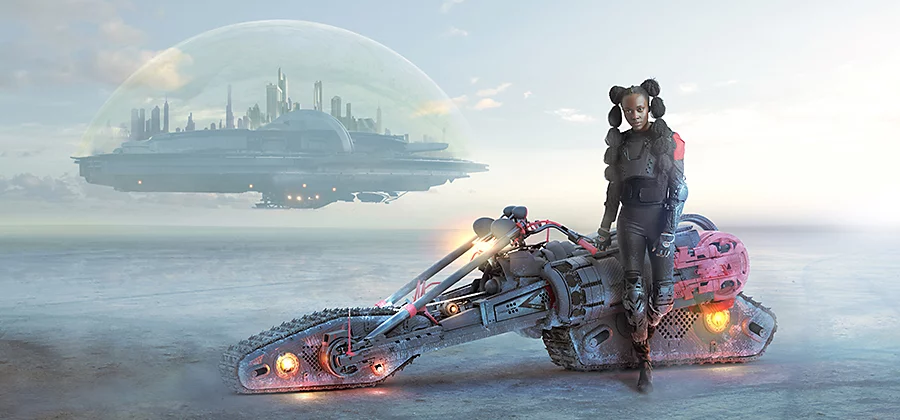Use images that work well together.
Achieving that realism starts with combining complementary photos. The images you’re working with should have something to do with each other when it comes to factors like color and light. “You can be amazing and know what you’re doing,” says Valdes-Hevia, “but if you are using two pictures that are radically different, that have very different perspectives or lighting, you’re going to have to heavily edit it.” The more you have to edit your photos, the harder your job is.
Match lighting and color.
Control subjects and elements in the camera.
Finding stock images or other existing photos with complementary elements is possible, but sometimes the best photos are the ones you take yourself in a controlled photoshoot. “It often looks better if you take your own pictures because you can plan ahead and match all the lighting and perspective beforehand,” says Valdes-Hevia. Getting shadows and perspectives to line up and work together is much easier if you’re the one who created those shadows and perspectives in the first place.
Mask up.
As you edit, make sure that you can go back and change things or restart your workflow. “One of the first things I had to learn was how to edit non-destructively,” Valdes-Hevia emphasizes. “Make sure you can go back later and change things you’ve done in the beginning. Masks are your friends.”
You can download it....





Most like this site😊😊
ReplyDelete